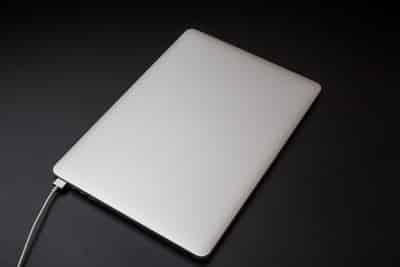
If there’s one major downside to laptop computers, it’s the battery. No battery lasts forever, and it can be very frustrating when your Mac battery won’t keep a charge, or even charge at all.
If your Mac is experiencing battery issues, you need to learn how to check your Mac battery health. Follow this guide to find out how to do that, and how to fix your potential problem.
How to Check Mac Battery Health
The first thing you should do is check your Mac’s battery health.
To do this, just hold the option key and click on the battery icon in the top right of the Mac’s status bar. You’ll see the percentage of the battery, the power source, and how long it’ll take to charge. At the top, you’ll see the word ‘condition’ followed by the status of the battery.
There are four possible states for the battery:
- Normal
- Replace Now
- Replace Soon
- Service Battery
What you want to see there is ‘normal.’ That means your battery is fully functioning and you should have no problem. If you see any of the other three statuses, then your battery is on its way out soon.
‘Replace now’ and ‘replace soon’ are pretty self-explanatory — if you see them, you have to either replace your battery right away or soon to fix your battery issues. If you see ‘service battery’ that means your battery has a technical issue and needs fixed or replaced. You may have to take your Mac battery to a repair store.
You can learn more about checking your Mac battery health here.
How Many Cycles Does a Mac Battery Last for?
Every battery lasts a certain number of “charge cycles” before dying. A cycle refers to every time you charge your Mac to 100%.
Typically, a Mac battery will last you about 1,000 charges before it deteriorates. You can see exactly how many cycles your Mac battery has gone through with a few simple clicks.
First, navigate to ‘About This Mac’ in the status bar, then click ‘System Report.’ You’ll see ‘Power’ to the left — click it. You’ll now see more specific readings about your battery, including how many cycles it’s been through.
If the cycle count is nearing 1,000, you’ve found the likely cause of your battery issues. This is also the likely issue if your battery runs out of charge fast. The battery needs replaced.
What to Do: Mac Battery Not Charging
If your battery is 100% dead, your Mac won’t hold a charge. It may run when you have it plugged in, but dies the second you unplug it. In other cases, the Mac simply won’t pick up the charger, acting like it’s not plugged in at all.
Hardware Issues
The most likely culprit here is a hardware issue. That means a physical issue with the charger or the charging port itself.
It could be any part of the Mac battery charger or port that’s failing, especially if it’s an older piece of hardware. Clean the port and the input of dust and see if that works. Examine the quality of your power adaptor — is it old, worn out, or damaged in any way?
If your battery health reads “service battery” that’s likely your issue. You can check your charge cycle to see if the battery needs replaced.
A lot of the time, a simple hardware issue is the only problem here.
Recall
Apple recalled a number of 2019 MacBooks because of battery issues. The main issue was overheating, which could be the cause of your issues.
Contact Apple to find out if your MacBook is specifically a recall. You’ll likely be able to send it back and get a new Mac.
Perform a Battery Reset
Sometimes resetting the battery is all you need to do.
If you have an older MacBook with a removable battery, turn off your computer. Unplug the battery, then hold down the power key on your Mac for 10 seconds. You can now plug the battery back in and test the computer.
If your Mac doesn’t have a removable battery, you need to reset the SMC, or System Management Controller.
To do this, start by shutting down your MacBook and connecting the power adapter. Next, hold Ctrl+Shift+Option along with the power button for 4 seconds. Release all of the buttons at the same time.
Now, start the MacBook again. Perform a Mac battery test and see if your computer is back up and holding a charge.
Get a Repair
If your Mac battery still isn’t working after all this, it’s time to go to a professional.
You can bring your MacBook to an Apple store, or an independent repair place. Ask them if they’ve dealt with Mac battery issues before, and what they presume the issue is. Vet a couple of repair shops before setting to find the right price and the most experienced repair people.
This is your best bet if you want to avoid buying a whole new battery. You may still need to buy a new battery, but the repair people could find another solution to the issue. Before you jump the gun and buy a new battery, always bring your Mac to a repair shop.
Keeping a Healthy Mac Battery
You should regularly check your Mac battery health even if you don’t have a battery issue. It’s the best way to stay on top of things, and determine when you might need a battery replacement.
If your Mac battery isn’t charging, don’t panic. Your Mac isn’t likely broken, and you might not even need a new battery. Test out the tips above and get your Mac back up and running 100%.
For more informative tech articles like this, stick around and check out the rest of our blog.
Leave a Reply
You must be logged in to post a comment.